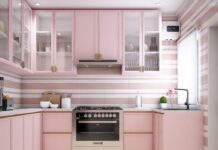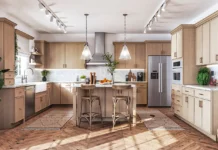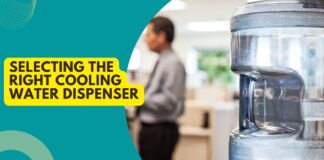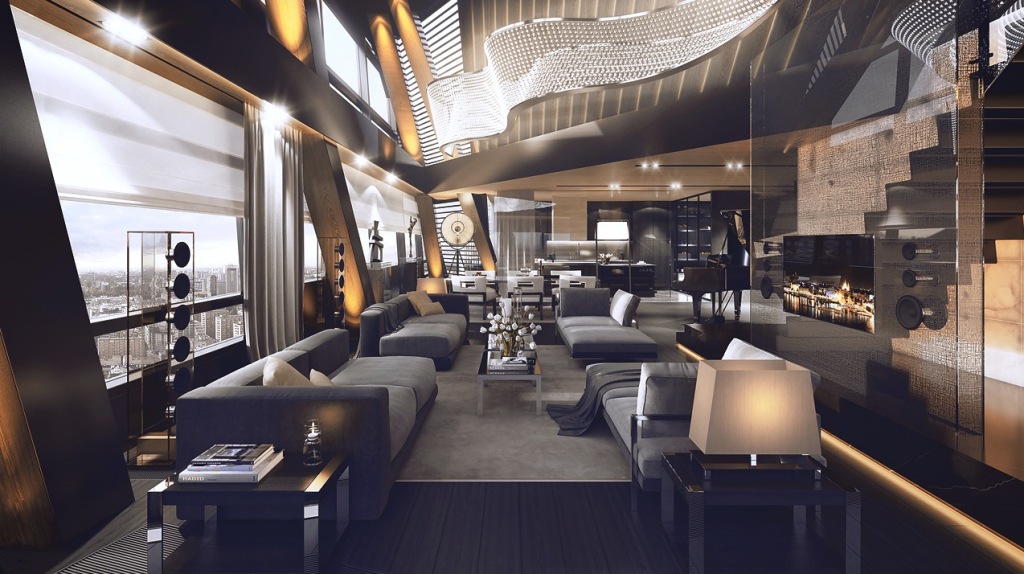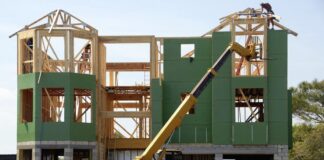A kitchen set is a piece of furniture that will need maximum attention, mainly if your family often cooks. After all, it should be durable and functional; after all, this is a cook’s workplace, and repairs in the kitchen turn into inconveniences for all family members. Style and beauty are also important because the headset is the main subject in the kitchen, and it is he who determines the type of the entire room. Therefore, we will deal with an important question: choosing a material for kitchen furniture to serve for many years, retain a presentable look, and not cause any inconvenience to cooks.
Kitchens are often dirty when cooking. Therefore, it is better to select such materials and colors so that splashes of grease and stains are less visible on them. The surfaces should be easy to clean and not stained with tea, coffee, juices.
The hygienic side is also essential. Porous and roughened materials are undesirable as dirt and bacteria can accumulate on them.
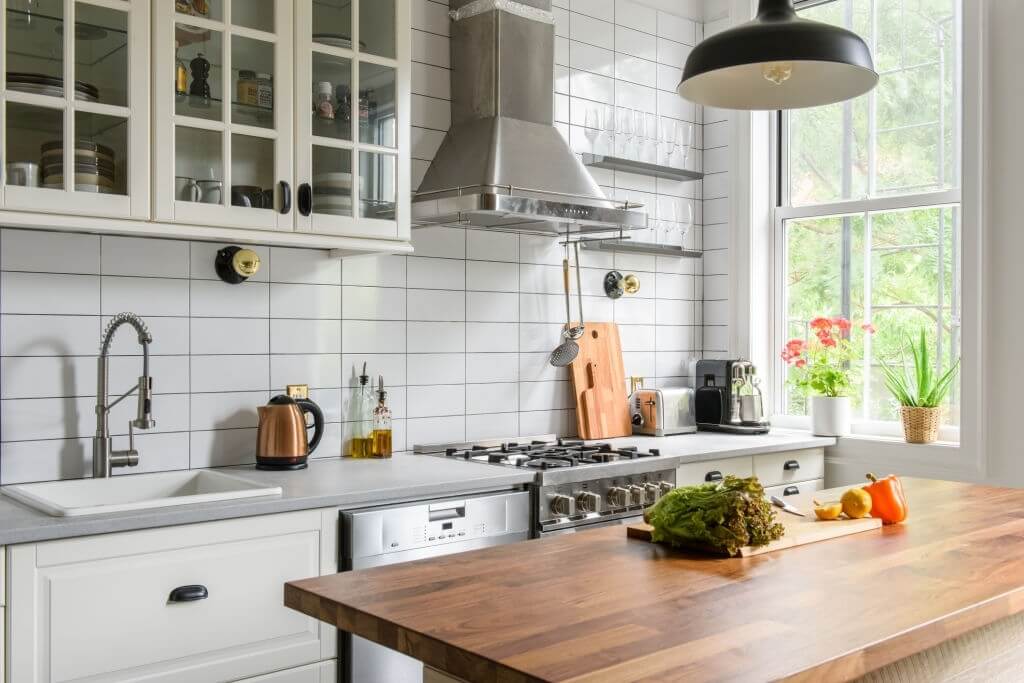
All kitchen manufacturers use laminated chipboard for frames:
- The density of the material.
- The quality of the film.
- The reliability of closing the edges differ.
In headsets, more expensive slabs are better: thicker, denser, durable. In cheap ones, they are thin, loose. They swell earlier when exposed to moisture. The loops in them do not hold well and fall out over time.
Let’s compare the advantages and disadvantages of popular materials, tell you what nuances to pay attention to when buying, and how to save money without compromising the quality of the headset. You can easily choose a good kitchen yourself – ready-made modular or custom-made.
Kitchen fronts
The doors of furniture sets are called facades. They define the “face” of your kitchen, define its style and strongly influence the perception of the entire interior.
The appearance, durability, and cost of facade parts depend on the selected base material and the type of decorative finish.
Chipboard
The most affordable of all kitchen materials. This material is most short-lived.
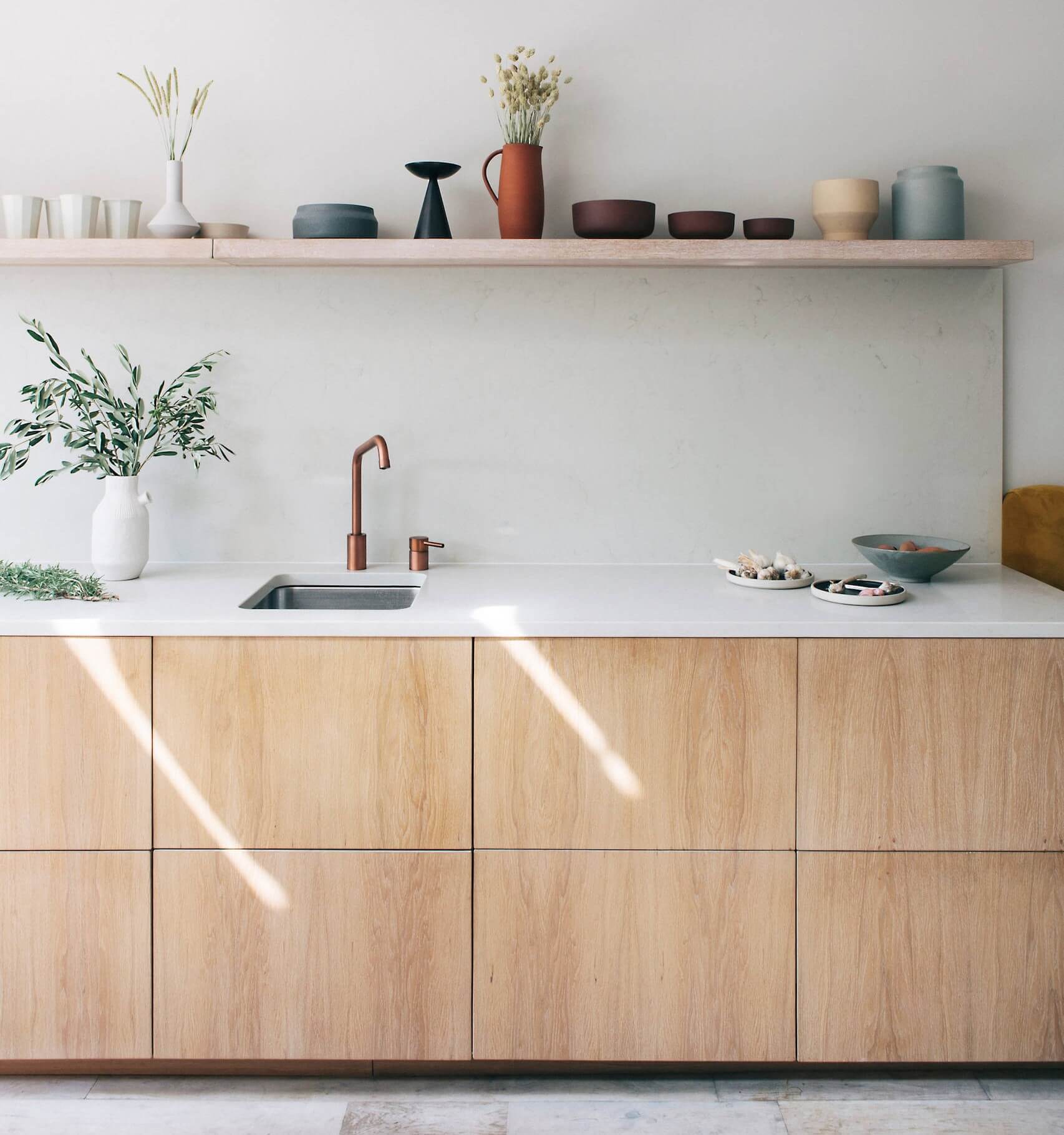
It used to produce inexpensive ready-made kitchens that can buy in large hardware stores.
A chipboard set is good only if you buy a kitchen for a short time and plan to replace it in 5 years.
| Advantages | Disadvantages |
| Low cost. | Short service life. |
| Many decors, including wood grain. | It often looks cheap. |
| It is not necessary to wait for customization. A set of kitchen modules can be taken home the same day. | Easy to scratch. |
| Afraid of moisture and steam. It can get wet and deformed in places of damage and joints. |
MDF
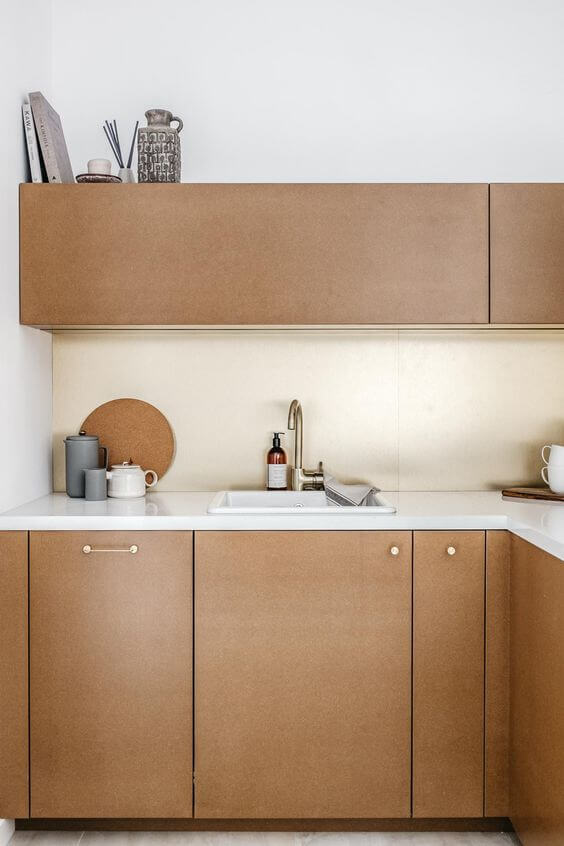
- The most popular facade material on the market.
- It is easy to process. Therefore furniture with bent elements and milling (decorative carving) is made from it.
- MDF kitchens are cheaper than solid wood, less capricious in care. It is more environmentally friendly than laminated chipboard and more robust since the raw materials are pressed more densely in them.
- MDF facades do cover with foil, plastic, acrylic, enamel, and veneer. What type of finish is best suited for kitchens, we will understand below.
PVC film
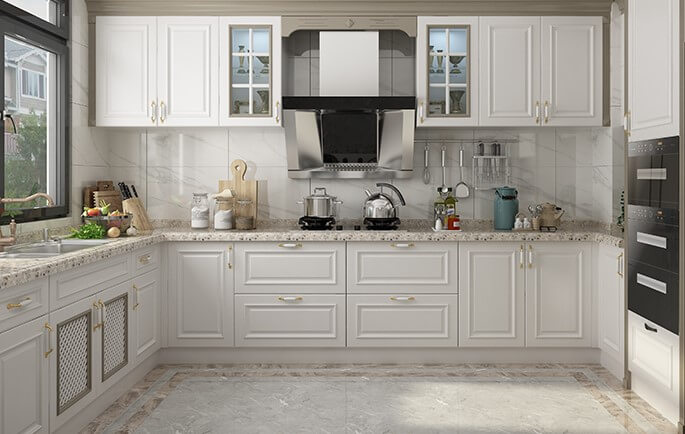
The most affordable decorative material for kitchens from MDF, which are made to order. A plate with a 16 or 19 mm thickness is pasted over with foil under a vacuum press.
If the manufacturer conscientiously adheres to the manufacturing technology and applies a good film, it does not peel off, does not bubble, does not fade.
| Advantages | Disadvantages |
| Various colors and textures (including glossy and woodgrain). | Due to errors in production and installation, the film in the kitchen can peel off due to hot steam—risk zones – modules next to the oven, dishwasher above the electric kettle. |
| Possibility of manufacturing carved and curved facades. | The material does not like solid detergents and sharp objects. |
| Impossible to restore. |
Plastic
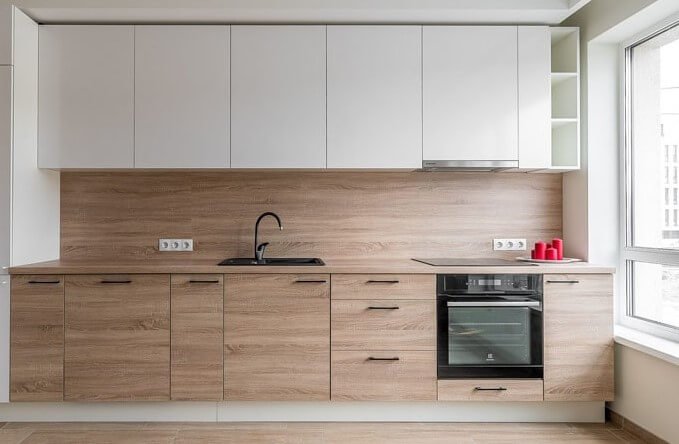
The front part of the facade is covering with a layer of HPL plastic. The good thing is that it is much denser and more robust than the film, more glossy.
| Advantages | Disadvantages |
| Large selection of decors, including wood imitation. | The result is only smooth, blank facades without milling. |
| More affordable than enamel and acrylic but also shines beautifully. | Fingerprints stand out clearly on glossy surfaces. |
| It does not deform, does not flake off from hot steam. |
Acrylic

The technology for producing kitchens from this material is the same as plastic ones: the MDF board is pasted over with a thin acrylic layer. The result is glossy facades with the same gloss level as you will see with enameled ones.
| Advantages | Disadvantages |
| Deep mirror gloss. | It is fastidious in leaving (“fingers” and stains will be in plain sight). |
| Very durable, resistant to chipping and other damage. | Does not allow milling. |
| Do not flake off. | |
| Do not fade in the sun. |
Enamel
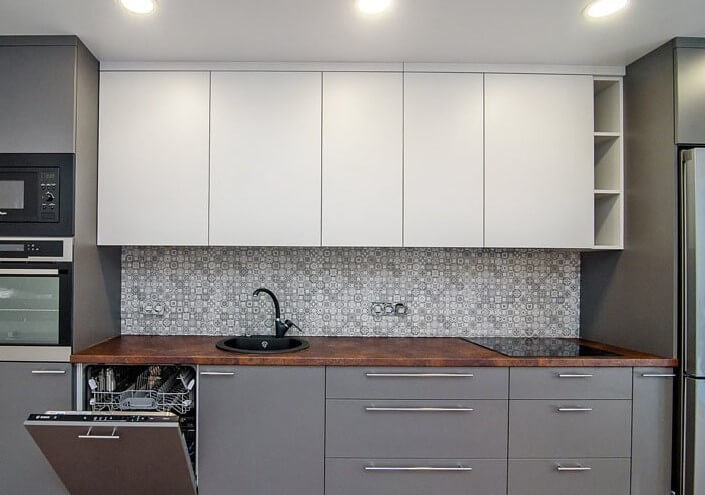
Enamel with glossy varnish is a worthy competitor to acrylic. But it requires more careful handling if you want to avoid scratches and chips.
| Advantages | Advantages |
| A vast palette of shades that remain determined according to unique layouts. | Do not tolerate aggressive detergents. |
| It is possible to match the color of the kitchen to other elements of the interior (wallpaper, paint, curtains). | Dislikes sharp objects. |
| Easy to clean. | In glossy kitchens (wildly colored and dark ones), “fingers” will be visible. |
| Uniform door without edges. | |
| Minor defects can be corrected. | |
| Suitable for kitchens with curved and carved doors. |
Veneer
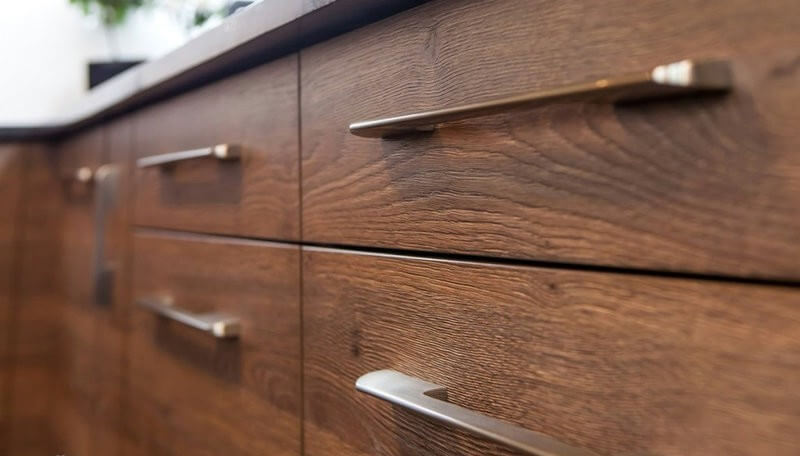
It is a thin cut of wood up to 3 mm thick, glued to the base of the facades—additionally covered with glossy or matte varnish.
| Advantages | Disadvantages |
| Very similar to an array – indistinguishable neither in appearance nor in touch. | Sensitive to moisture and overheating. |
| Long-lasting, aging elegantly. | Without varnishing, it changes color over time. |
| Possibility of restoration of minor defects. |
Choice of countertops
Excellent materials for the production of kitchen countertops are moisture-resistant chipboard laminated with plastic and artificial stone.
Acrylic
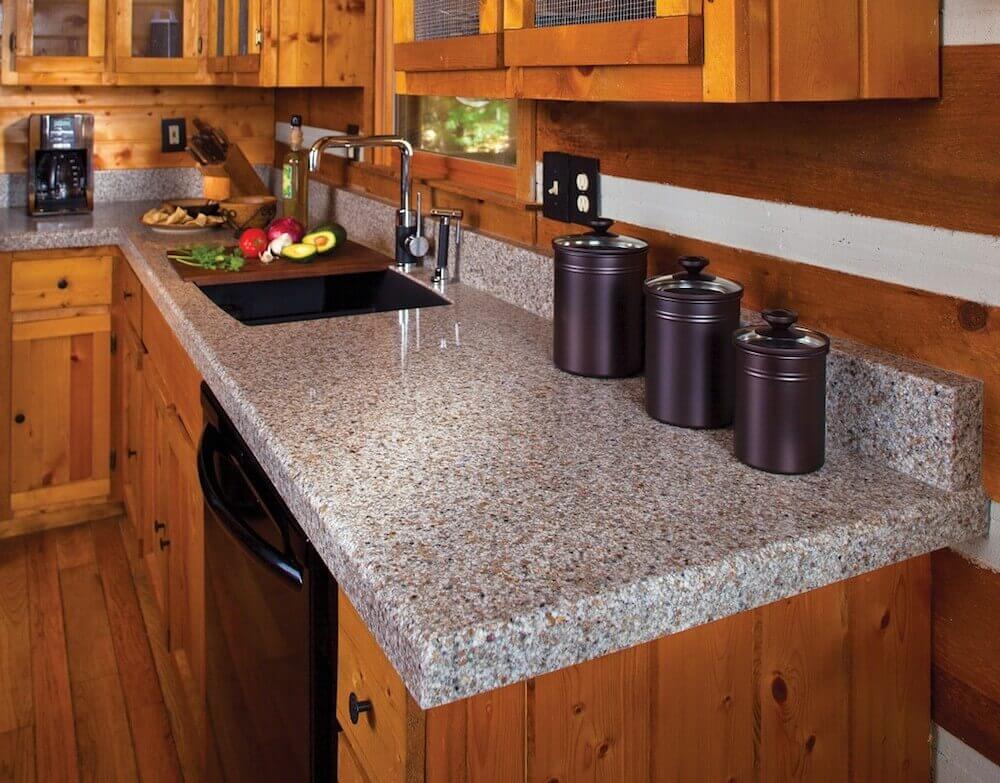
The acrylic composite contains 60-70% mineral natural material and 30-40% acrylic resins with colored pigments.
| Advantages | Disadvantages |
| Panel joints are sanded. The result is a smooth surface with no visible seams. | Scratches if handled carelessly. |
| The plasticity of acrylic makes it possible to produce products with bends and radius elements. | Afraid of hot pots (ugly stains remain). |
| Spectacular design and rich colors. Reliably imitates the pattern of a natural stone. | Sensitive to acids and aggressive detergents. |
| Environmental friendliness and hygiene. Acrylic has no pores, which means there will be no fungi and bacteria in the kitchen. | Vital dyes (juices, red wine, coffee, etc.) may appear on light-colored materials if not wiped off immediately. |
| The color does not fade over time. It does not fade under sunlight. | |
| Defects are removed by grinding. | |
| The same sink can integrate into the worktop. No seams. |
Plastic
These are friendly and inexpensive surfaces made of chipboard with a thickness of 26 and 38 mm, covered with HPL plastic.
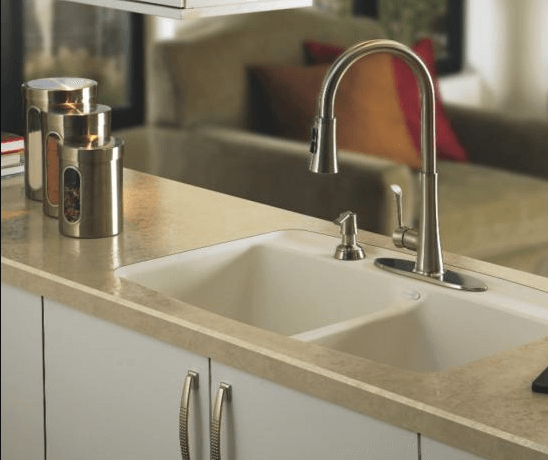
A laminated tabletop for a budget and mid-range headset is a good solution. Provided that the chipboard is dense, moisture resistant, the protective layer is not damaged, and the end is reaching an edge. The main thing is to choose and operate it correctly.
| Advantages | Disadvantages |
| Affordable price | Short service life (for economy class products, usually no more than 5-7 years). |
| Reasonable care (can be washed with a wet cloth, cleaned with a brush, use non-abrasive products). | Compared to artificial stone and wood, it looks rustic. |
| Variety of colors and textures (150+ colors). | It swells when moisture gets on the chipboard inside (if the plastic is damaged or poorly closed ends). |
| It is not difficult to mount and dismantle by yourself, embed a sink, etc. | Poorly withstands high temperatures. Afraid of sharp knives. |
| Poorly withstands high temperatures. Afraid of sharp knives. Noticeable seams (if the kitchen is angular or longer than 3 meters) are closed with unique profiles. An alternative is Eurozapil, but this service will have to pay additionally. |
In a nutshell
The ideal kitchen set is beautiful, functional, and durable. To perform it this way, it is crucial to choose suitable materials. Here are the ingredients for a good headset:
- Frame made of laminated chipboard (with high-quality glued PVC edge).
- The tabletop is made of artificial stone or laminated board.
- Facades: All decent quality products are good (except for budget wood and low-quality “film”).
Brand fittings with door closers.

